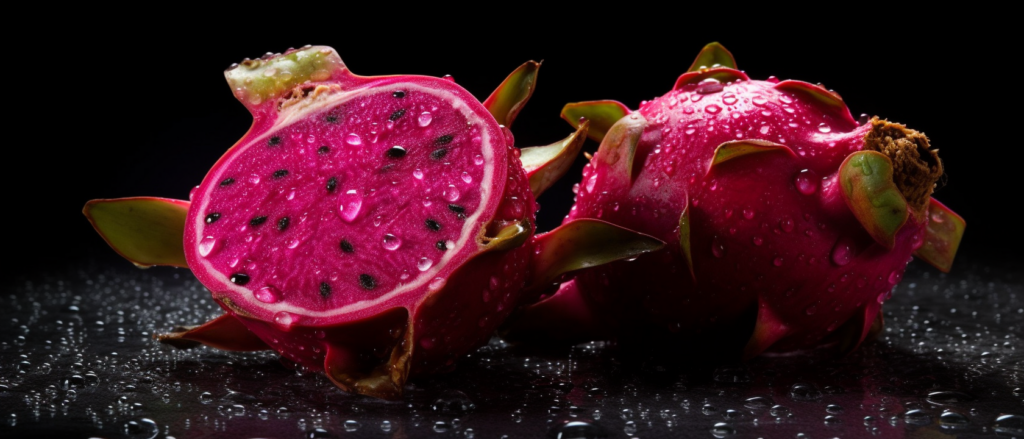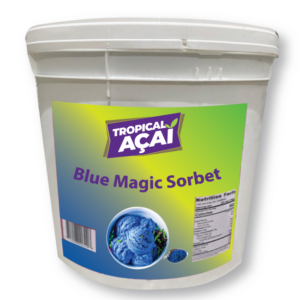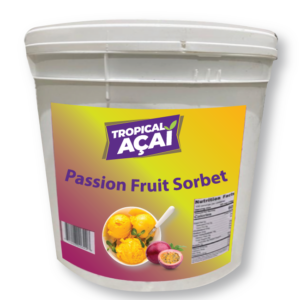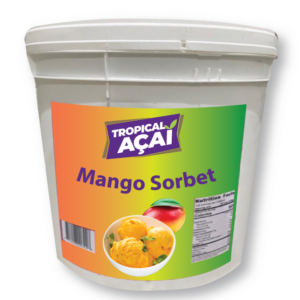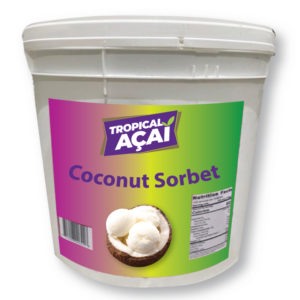Introduction: Diving into the World of Pitaya Fruit
The Grand Unveiling: Welcome to the World of Pitaya Fruit
Welcome to the world of pitaya fruit! This exotic dragon fruit has taken the health world by storm. It’s vibrant colors and unique taste captivate the senses. As you embark on your journey of exploring many exciting recipes for Pitaya Fruit, you’ll also discover useful storage tips and an insightful market analysis. But it’s more than just a pretty face. Its nutritional profile is just as impressive, making it a true superfood.
Native to Central and South America, pitaya fruit is grown and enjoyed worldwide. It comes from various species of the cactus family, contributing to its unique, spiky appearance. Depending on the variety, its flesh can be white, red, or even yellow, each speckled with tiny black seeds.
Take a journey with us as we delve into the world of pitaya fruit. From its history to its health benefits, we leave no stone unturned. Whether you’re a health enthusiast, a curious consumer, or a potential investor, there’s something for everyone.
Why Choose Pitaya Fruit? The Superfood Advantage
The term “superfood” is more than just a buzzword. It represents foods packed with nutrients, offering significant health benefits. And pitaya fruit fits the bill perfectly. This tropical fruit is rich in vitamins, minerals, and antioxidants. All these play vital roles in overall health.
Pitaya fruit is an excellent source of Vitamin C, known for boosting the immune system. It also contains fiber, promoting good digestion. Its high antioxidant content is also a great ally against oxidative stress. So it’s no wonder pitaya fruit is often featured in health-conscious diets.
Choosing pitaya fruit means choosing health. But it’s not just the nutritional aspect that makes it appealing. Its versatility in various recipes, sustainable farming practices, and growing market potential. Indeed, choosing pitaya fruit means choosing a better, healthier future.
The Colorful Attraction: Understanding Pitaya Fruit’s Vibrant Appeal
Pitaya fruit is indeed a feast for the eyes. Its vibrant colors and unique appearance make it stand out. Its outer skin is bright pink or yellow, while its inner flesh can be white, red, or yellow, depending on the variety. This visual appeal makes pitaya fruit an attractive addition to any dish.
But these colors are not just for show. They also give us a glimpse of the fruit’s nutritional profile. For instance, red-fleshed pitaya is high in lycopene, a potent antioxidant. On the other hand, the white-fleshed variety is known for its balanced sweetness and texture.
The vibrant appeal of pitaya fruit is an invitation to explore its wonders. Its beautiful hues, and delightful flavors beckon us to enjoy its nutritional benefits. It’s a delicious and nutritious journey that’s genuinely worth embarking on.
Unleashing the Potential: Why Pitaya Fruit is a Game-Changer
Regarding economic development, the pitaya fruit’s growing popularity holds much promise. It’s becoming an essential commodity in global trade. Both producing and non-producing countries find value in this superfruit, creating an exciting and lucrative market.
Indeed, pitaya fruit is a game-changer. It offers vast potential for individual health and broader societal benefits. From its role in promoting sustainable agriculture and culinary innovation to its impact on economic development, pitaya fruit is worth exploring and investing in.
The Historical Trail: Tracking Pitaya Fruit’s Past
Timeless Roots: Tracing the Origins of Pitaya Fruit
Pitaya fruit has a rich history that dates back centuries. It’s believed to have originated in Central and South America. Indigenous tribes cultivated and cherished the fruit long before it gained worldwide fame.
These cultures recognized the value of pitaya fruit early on. They utilized every part of the plant. The fruit was a nourishing food source, while the flowers were used in traditional medicine. Even the cactus stems served purposes, such as building materials.
The Spanish Conquistadors are credited for spreading pitaya fruit across the globe. Then, they introduced the fruit to Southeast Asia, where it thrived in the tropical climate. Today, countries like Vietnam and Thailand are leading producers, catering to the growing international demand for pitaya fruit.
Cultural Connotations: Pitaya Fruit’s Role in Folklore and Traditions
Pitaya fruit holds a special place in many cultures. It’s deeply rooted in folklore and traditions. For example, in some cultures, pitaya fruit is seen as a symbol of prosperity and good fortune.
For instance, the pitaya fruit is often associated with the Lunar New Year in Vietnam. It’s considered a lucky fruit and is displayed as a festive decoration. Its vibrant color is believed to bring good luck for the coming year.
In specific indigenous communities, pitaya fruit holds sacred connotations. It’s used in traditional rituals and ceremonies. Its impressive growth and blooming process symbolizes life, growth, and transformation.
Pitaya Fruit’s Journey: From Ancient Times to Modern Tables
The journey of pitaya fruit is genuinely fascinating. From ancient civilizations to modern supermarkets, pitaya fruit has made a long journey. And its popularity continues to soar.
Once a prized possession of ancient tribes, pitaya fruit is now a household name. It’s a favorite in health-conscious diets and is a staple in many cuisines. With its growing recognition, pitaya fruit has made its way to the produce aisles of supermarkets around the globe.
And it’s not just the fruit that’s gaining recognition. Its farming practices are being spotlighted, too. With its minimal requirements and resilience to pests, pitaya fruit stands as an example of sustainable agriculture. This only boosts its appeal in a world increasingly conscious about sustainable food choices.
Symbolic Importance: The Spiritual and Cultural Dimensions of Pitaya Fruit
Pitaya fruit carries deep spiritual and cultural significance. Its unique appearance and growth process often symbolize various life themes. In many cultures, pitaya fruit stands as a symbol of mystery, beauty, and transformation.
For instance, the plant’s nocturnal flowering represents the beauty in mystery and the power of transformation. Likewise, the vibrant fruit that emerges from the night-blooming flower symbolizes the rewards of patience and perseverance.
Today, while we enjoy pitaya fruit for its taste and health benefits, understanding its cultural and spiritual significance adds another layer of appreciation. It invites us to see pitaya fruit as a food item and a living entity with deep-rooted symbolism and history.
Nutritional Breakdown: Understanding What Makes Pitaya Fruit a Superfood

The Nutritional Composition of Pitaya Fruit: A Detailed Look
Pitaya fruit is a nutritional powerhouse. Each bite delivers a wealth of vitamins, minerals, and other health-promoting compounds. Let’s dive deeper into what makes pitaya fruit a true superfood.
Pitaya fruit is an excellent source of Vitamin C, a powerful antioxidant that boosts immune health. It’s also fiber-rich, promoting good digestion and contributing to a feeling of fullness. This makes it an excellent choice for those watching their weight.
Additionally, pitaya fruit offers a range of essential minerals. It contains calcium for bone health, iron for blood health, and magnesium for numerous body functions. It’s also packed with antioxidants that fight against harmful free radicals.
The nutritional content for 100g of dragon fruit:
- Energy: 60 Calories
- Protein: 1.2 g
- Total Fat: 0 g
- Saturated fat: 0 g
- Polyunsaturated fat: 0 g
- Monounsaturated fat: 0 g
- Trans fat: 0 g
- Cholesterol: 0 mg
- Total Carbohydrate: 13 g
- Dietary fiber: 3 g
- Total sugars: 8 g
- Vitamins:
- Vitamin C: 20.5 mg
- Vitamin A: 50 IU
- Vitamin E: 0.5 mg
- Vitamin K: 4 mcg
- Thiamin (B1): 0.04 mg
- Riboflavin (B2): 0.045 mg
- Niacin (B3): 0.43 mg
- Vitamin B6: 0.043 mg
- Folate (B9): 7 mcg
- Vitamin B12: 0 mcg
- Minerals:
- Calcium: 8.8 mg
- Iron: 0.65 mg
- Magnesium: 10 mg
- Phosphorus: 22.5 mg
- Potassium: 102.5 mg
- Sodium: 0 mg
- Zinc: 0.1 mg
- Copper: 0.07 mg
- Manganese: 0.12 mg
- Selenium: 0.2 mcg
Please note that the exact values can vary somewhat depending on the specific variety of dragon fruit and its stage of ripeness.
Pitaya Fruit and Other Superfoods: A Comparative Analysis
Compared to other superfoods, pitaya fruit holds its own. It offers a unique combination of nutrients that set it apart.
For instance, pitaya fruit is lower in sugar than many fruits, making it an excellent choice for those monitoring their sugar intake. It also provides a substantial amount of fiber, often lacking in modern diets.
Regarding antioxidant content, pitaya fruit is comparable to berries, known superfoods. Its high antioxidant levels make it a strong ally against oxidative stress.
In short, while each superfood brings its benefits to the table, pitaya fruit’s unique nutritional profile makes it a worthy addition to any diet.
The Nutrient Powerhouse: Why Pitaya Fruit Stands Out
So why does pitaya fruit stand out among other superfoods? It’s the harmony of its nutrients that makes the difference.
While many superfoods excel in one or two nutrients, pitaya fruit offers a well-rounded profile. It provides essential vitamins, minerals, fiber, and antioxidants in every serving.
Additionally, the nutrients in pitaya fruit are easily absorbed by the body. This is partly due to dietary fiber, which aids in nutrient absorption.
Lastly, pitaya fruit’s low calorie and sugar content make it a guilt-free choice. It lets you enjoy the refreshing taste without worrying about excess sugar or calories.
Science-Backed Evidence: Validating the Nutritional Claims of Pitaya Fruit
The nutritional benefits of pitaya fruit are not just hearsay. They’re backed by scientific research. Studies validate the fruit’s rich nutrient content and its potential health benefits.
Research shows that the antioxidants in pitaya fruit can help combat oxidative stress. Other studies highlight its fiber content, demonstrating its role in promoting digestive health.
Meanwhile, its vitamin C content has been recognized for boosting immune health. Also, its mineral content contributes to various body functions.
In conclusion, science validates the superfood status of pitaya fruit. Furthermore, it confirms that pitaya fruit is not just a trend but a nutritious fruit worthy of popularity.
The Health Boost: Discovering the Benefits of Pitaya Fruit
The Immune System Champion: How Pitaya Fruit Enhances Immunity
One of the most significant benefits of pitaya fruit is its impact on the immune system. The fruit’s high vitamin C content plays a crucial role here. This powerful antioxidant boosts the immune system, helping the body prevent illnesses and infections.
Vitamin C stimulates the production of white blood cells, the body’s primary defense against pathogens. Additionally, it functions as an antioxidant, protecting cells from damage caused by free radicals. So with pitaya fruit, you get a delicious way to keep your immune system robust.
Promoting Digestive Health: The Role of Pitaya Fruit
Digestive health is another area where pitaya fruit shines. Thanks to its high fiber content, pitaya fruit aids digestion and prevents constipation. Consuming pitaya fruit can contribute to a healthy digestive system.
Fiber adds bulk to the stool, helping it pass smoothly through the digestive tract. Besides, fiber also promotes a feeling of fullness, which can help control overeating. So, adding pitaya fruit to your diet is a tasty way to keep your digestive system running smoothly.
Pitaya Fruit and general health: A Powerful Combination
Pitaya fruit also contributes to general health. The seeds of pitaya fruit are rich in omega-3 and omega-6 fatty acids. These are known to lower bad cholesterol (LDL) levels and increase good cholesterol (HDL), reducing the risk of other diseases.
Additionally, the antioxidants in pitaya fruit fight oxidative stress, which is linked to other disease. Therefore, consuming pitaya fruit can help maintain a healthy body.
Maintaining Healthy Skin: The Beauty Benefits of Pitaya Fruit
Lastly, pitaya fruit offers benefits for the skin, too. The high antioxidant content combats skin aging. In addition, it fights against free radicals, which cause skin damage and premature aging.
Moreover, vitamin C in pitaya fruit plays a vital role in collagen production, a protein that maintains skin elasticity. Eating pitaya fruit can help you achieve a youthful and radiant complexion.
The health benefits of pitaya fruit are impressive. From boosting immunity and promoting digestive health to maintaining general health, pitaya fruit is a worthy addition to your diet.
Pitaya in the Kitchen: Tasty and Nutritious Recipes to Try
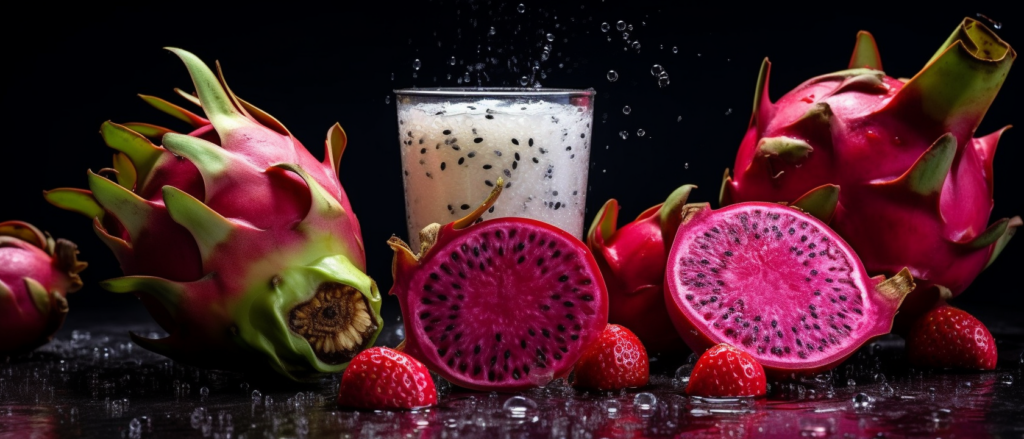
Healthy Breakfast: Pitaya Fruit Smoothie Bowl Recipe
Kick-start your day with a refreshing pitaya fruit smoothie bowl. It’s a perfect blend of taste, nutrition, and aesthetics.
To make a pitaya fruit smoothie bowl, you’ll need a ripe pitaya fruit, a banana, and a splash of almond milk. Blend these until smooth. Pour the mixture into a bowl and top with your choice of granola, nuts, seeds, or fresh fruits. Enjoy this rich and nutritious breakfast that’s sure to energize your day.
Refreshing Snack: Pitaya Fruit Salad Recipe
A pitaya fruit salad makes a refreshing snack. It’s simple to prepare and is packed with health benefits.
For a basic pitaya fruit salad, combine chunks of pitaya fruit with other fresh fruits of your choice. Drizzle some fresh lime juice on top and toss lightly. Enjoy this vibrant and refreshing salad on a hot summer day or as a healthy dessert.
Exotic Treat: Pitaya Fruit Sorbet Recipe
Indulge in an exotic treat with a pitaya fruit sorbet. It’s a guilt-free dessert that satisfies your sweet tooth while loading you with nutrients.
To make a sorbet, puree the pitaya fruit pulp in a blender until smooth. Add a little honey or agave syrup if desired. Pour the mixture into a container and freeze until firm. Scoop and serve this delightful treat for a healthy and refreshing dessert.
Creative Starter: Pitaya Fruit Salsa Recipe
Add a tropical twist to your appetizers with a pitaya fruit salsa. It’s a creative way to incorporate pitaya fruit into your meals.
For pitaya fruit salsa, combine diced with chopped tomatoes, onions, and cilantro. Add some chopped jalapeno for a bit of heat. Season with lime juice, salt, and pepper. Serve this vibrant salsa with tortilla chips or a topping for grilled fish or chicken.
These pitaya fruit recipes prove that healthy eating can be delicious and exciting. In addition, they allow you to enjoy the benefits of pitaya fruit in various tasty ways.
DIY Pitaya Bowls: A Step-by-Step Guide to Making Pitaya Bowls at Home
Choosing Your Pitaya: How to Pick the Perfect Fruit
The first step to making a pitaya bowl is selecting the right fruit. When buying pitaya, look for bright, even-colored skin. Avoid fruits with brown spots or bruises, as these are signs of over-ripeness.
The fruit should be firm to the touch but yield slightly under pressure, similar to a ripe avocado. If it’s too soft, it’s likely overripe. If it’s too hard, it’s not mature enough.
The Right Equipment: What You Need to Make a Pitaya Bowl
To make a pitaya bowl, you’ll need some essential kitchen equipment. A blender or food processor is necessary for creating the smoothie base. You’ll also need a knife to cut the pitaya fruit and a spoon to scoop out the pulp.
For serving, you’ll need a bowl and a spoon. However, if you want to get creative, you can use the hollowed-out pitaya skin as a natural, biodegradable bowl.
Creating Your Pitaya Bowl: A Simple Recipe to Follow
Making a pitaya bowl is simple and fun. Here’s a basic recipe to get you started.
Cut the pitaya fruit in half. Scoop out the flesh and save the skin for serving. Combine the pitaya fruit pulp, a frozen banana, and a splash of coconut milk in a blender. Blend until smooth.
Pour the mixture into the pitaya skin or a bowl. Top with your favorite toppings. You can use sliced fruits, granola, coconut flakes, nuts, seeds, or a drizzle of honey. Enjoy your homemade pitaya bowl as a refreshing breakfast or snack.
Preserving the Freshness: How to Store Your Pitaya Fruit
If you don’t use the entire pitaya fruit, it’s important to store it properly to preserve its freshness. Wrap the leftover pitaya fruit tightly in plastic wrap and store it in the refrigerator. It should keep for about a week.
Alternatively, you can freeze the pitaya fruit. First, cut it into chunks and spread them on a baking sheet. Freeze until firm, then transfer to a freezer-safe bag or container. Frozen pitaya fruit can be used directly in smoothies, making for a thicker, creamier texture.
This guide lets you easily create your pitaya bowls at home. It’s a delicious and healthy way to enjoy this superfruit.
Commercial Aspects of Pitaya Fruit: A Guide for Store Owners
Sourcing Pitaya Fruit: Where to Find Quality Products
Sourcing quality pitaya fruit is crucial for store owners. As a tropical fruit, pitaya is primarily grown in Central and South America, Southeast Asia, and some parts of the United States.
When sourcing pitaya fruit, consider working with reputable suppliers who can guarantee the fruit’s quality. In addition, look for suppliers who practice sustainable farming methods and can provide consistent supplies.
Storing Pitaya Fruit: Best Practices for Freshness and Quality
Proper storage of pitaya fruit is essential to maintain its freshness and quality. Therefore, Pitaya fruit should be stored at a cool temperature between 10 and 13 degrees Celsius (50 to 55 degrees Fahrenheit).
Avoid storing pitaya fruit near ethylene-producing fruits like apples and bananas, as this can hasten to ripen. It’s also important to handle the fruit gently to avoid bruising.
Marketing Pitaya Fruit: Tips for Boosting Sales
Marketing is key when it comes to boosting sales of pitaya fruit. Highlight the fruit’s health benefits and unique taste in your promotional materials. In addition, offering samples is a great way to introduce customers to the fruit’s unique flavor.
Also, consider featuring pitaya fruit in recipes. This can give customers ideas on using the fruit and may encourage them to purchase more.
Understanding the Market: Pitaya Fruit’s Commercial Appeal
Pitaya fruit’s commercial appeal lies in its superfood status. The growing trend towards health and wellness has increased the demand for superfoods like pitaya.
The fruit’s vibrant color and unique taste make it appealing to consumers. With the right marketing strategies, pitaya fruit can be a profitable addition to your product range.
The commercial aspects of pitaya fruit are promising. With quality sourcing, proper storage, and effective marketing, store owners can successfully sell pitaya fruit and meet customers’ demand for healthy, exotic fruits.
Expanding the Business: The Role of Certifications in Pitaya Fruit Trade
Organic Certification: Boosting Pitaya Fruit’s Market Appeal
Organic certification can significantly enhance pitaya fruit’s market appeal. More consumers are seeking out organic products due to health and environmental concerns. Organic certification assures customers that the fruit is grown without synthetic pesticides and fertilizers.
Obtaining an organic certification requires complying with specific standards and undergoing regular audits. While the process can be challenging, the potential increase in market value makes it worthwhile.
Fair Trade Certification: Promoting Social Sustainability
Fairtrade certification is another valuable credential in the pitaya fruit trade. It shows that the fruit is grown and traded appropriately, providing decent wages and safe working conditions for farmers and workers.
Fairtrade certification can attract socially conscious consumers and enhance your business’s reputation. It can also contribute to sustainable development in pitaya-producing regions.
Non-GMO Verification: A Plus for Health-Conscious Consumers
Non-GMO verification can also boost pitaya fruit’s market appeal. It assures consumers that the fruit is not genetically modified, a concern for many health-conscious consumers.
While most pitaya fruit is non-GMO, a Non-GMO Project Verified seal can provide additional assurance. In addition, it can differentiate your product in a competitive market.
Food Safety Certification: Ensuring Quality and Trust
Food safety certification is crucial in the food industry. It shows that the fruit is grown, harvested, and handled following good agricultural and manufacturing practices. It ensures the product’s quality and safety, gaining consumer trust.
Certifications like HACCP (Hazard Analysis and Critical Control Points) and ISO 22000 are widely recognized in the food industry. Obtaining such certificates can enhance your business’s credibility and consumer confidence.
Investing in relevant certifications can enhance pitaya fruit’s market appeal and value. In addition, they can differentiate your product, increase consumer trust, and boost sales.
Navigating Challenges and Opportunities in the Pitaya Fruit Market
Assessing the Global Demand for Pitaya Fruit
The global demand for pitaya fruit has been on an upward trajectory. Its unique taste, vibrant color, and superfood status have caught the attention of health-conscious consumers globally.
Asian countries, particularly China and Vietnam, are significant consumers of pitaya fruit. However, its popularity is growing in Western countries, too, thanks to the rising demand for exotic fruits and healthy food choices.
Understanding the Challenges in the Pitaya Fruit Trade
While the prospects are promising, the pitaya fruit trade also presents some challenges. The fruit’s short shelf-life requires careful handling and quick transportation. It also necessitates a cold chain for long-distance export, which can increase costs.
Furthermore, sourcing from sustainable and ethical growers can be a challenge. Store owners must ensure their suppliers adhere to good farming practices and respect workers’ rights.
Leveraging Opportunities in the Pitaya Fruit Market
Despite these challenges, several opportunities exist in the pitaya fruit market. First, the growing health and wellness trend is a significant market driver. Store owners can leverage this trend by positioning pitaya fruit as a nutritious and delicious superfood.
Moreover, the demand for exotic and unique flavors presents an opportunity. With its distinct taste and vibrant color, pitaya fruit offers something different from typical fruits.
Positioning for Success in the Pitaya Fruit Market
To succeed in the pitaya fruit market, store owners must stay updated with market trends and consumer preferences. They must also build relationships with reputable suppliers and invest in proper storage and handling practices.
With the right strategies, store owners can navigate the challenges and opportunities in the pitaya fruit market and succeed.
Frequently Asked Questions about Pitaya Fruit
What Does Pitaya Fruit Taste Like?
Pitaya fruit offers a subtly sweet taste, somewhat akin to a melon or kiwi. Its texture is also similar to kiwi, with tiny black seeds embedded in the soft fruit pulp.
Is It Safe to Eat Pitaya Fruit Seeds?
Yes, it’s safe to eat pitaya fruit seeds. They’re tiny and provide dietary fiber. The seeds are consumed along with the fruit pulp.
Can I Eat Pitaya Fruit Skin?
No, the skin of the pitaya fruit is not edible. It’s thick and leathery and should be discarded. Only the inside pulp is consumed.
How Can I Tell If a Pitaya Fruit Is Ripe?
A ripe pitaya fruit will be vibrant with no significant brown spots or bruises. It should be slightly soft, similar to a ripe avocado.
Why Is My Pitaya Fruit Sour?
If your pitaya fruit tastes sour, it’s likely, not ripe yet. Allow it to ripen at room temperature for a few more days, and it should sweeten up.
What Are the Health Benefits of Pitaya Fruit?
Pitaya fruit is rich in antioxidants, fiber, and vitamin C. It supports digestive health, boosts the immune system, and improves overall wellness.
Where Can I Buy Pitaya Fruit?
Pitaya fruit can be found in grocery stores, health food stores, and online. It’s often sold as fresh fruit, frozen pulp, or powdered.
How Do I Store Leftover Pitaya Fruit?
Leftover pitaya fruit should be wrapped in plastic and stored in the refrigerator. It can also be frozen for more extended storage.
Is Pitaya Fruit Suitable for a Vegan Diet?
Yes, pitaya fruit is suitable for a vegan diet. It’s a plant-based food that contains no animal-derived ingredients.
How Can I Incorporate Pitaya Fruit into My Diet?
Pitaya fruit can be enjoyed in various ways. You can eat it fresh, add it to salads, smoothies, or make a colorful and nutritious pitaya bowl.

